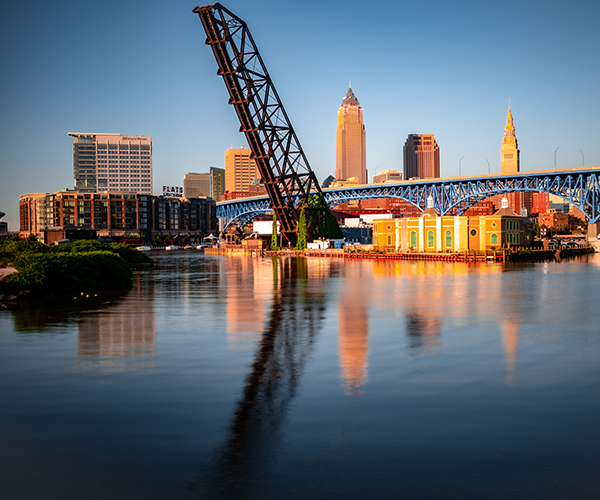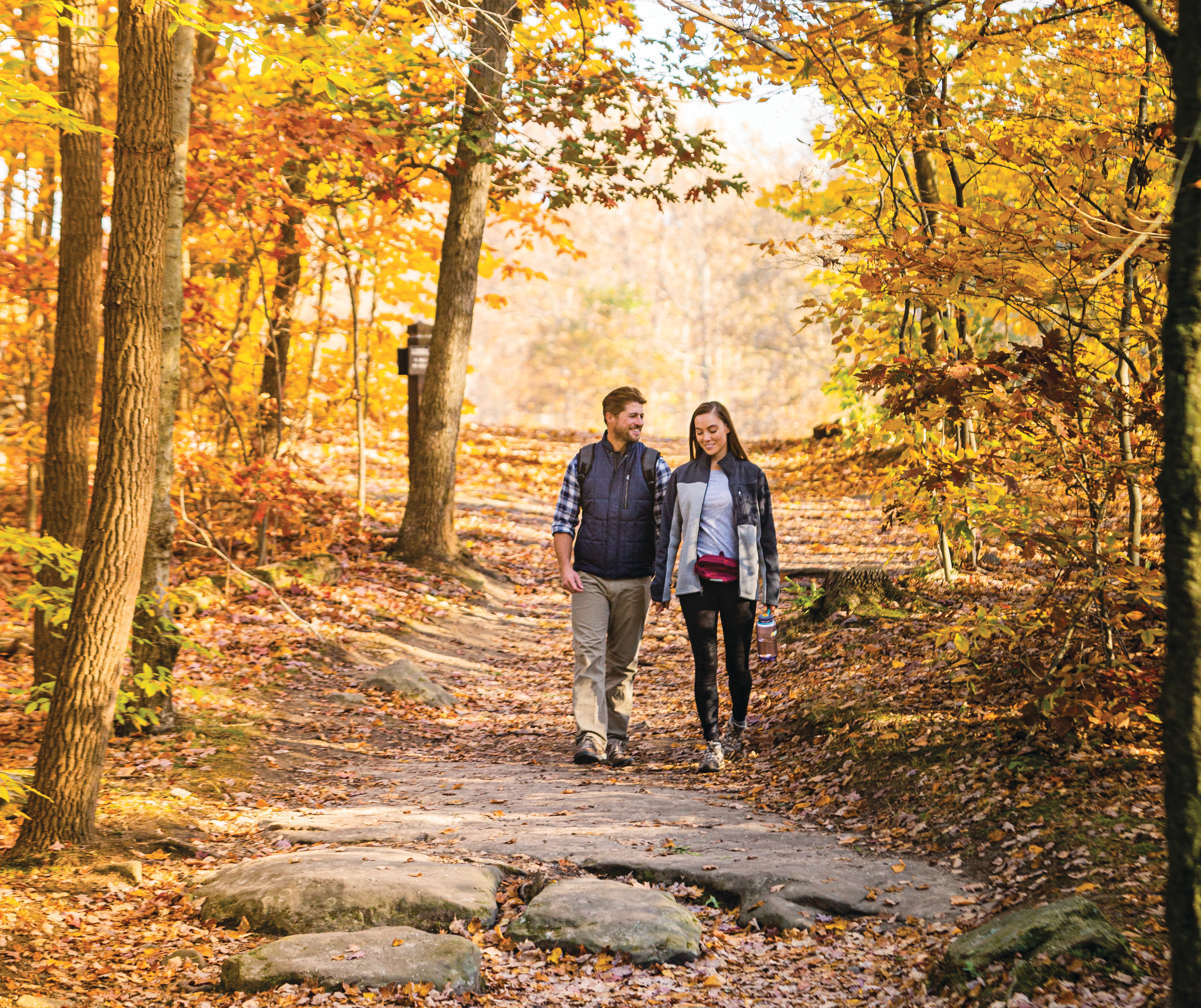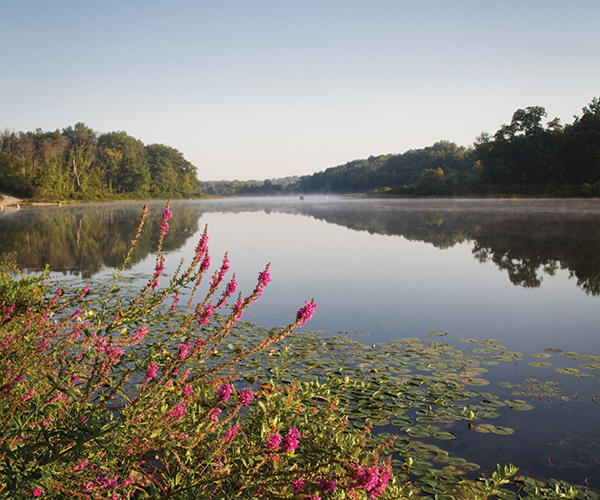It's still March when Thomas Mulready slides into a bench at The Diner on Clifton. Even though it doesn't carry the tea he drinks, he's been holding meetings at this trendy restaurant so often it could charge him rent.
It takes Mulready about five seconds to bring out the spiral-bound proposal for the Ingenuity Festival. And not long after that, he shows off its handsome logo, the fruits of a thus-far pro-bono relationship with local advertising agency Liggett-Stashower. Featuring an "i" with a flame instead of a dot to make it look like a smokestack, the logo puts a new sheen on Cleveland's old economy and pays tribute to its legacy.
Mulready's big on legacy. The arts festival will leave a legacy along the downtown streets, he says, a gallery here, a sculpture there. Before he's sold us on the festival itself, he's talking about what it will do for Cleveland when it's over.
Many cities — among them Columbus, Pittsburgh and Cincinnati — have arts festivals showcasing their visual and performing artists. But no city has an arts festival like Ingenuity, which will be a four-day spectacle devoted to Northeast Ohio innovations, including arts performances, technology demonstrations and arts-tech "fusions" taking place throughout downtown from Sept. 1 through 4. The idea sprung from the minds of co-directors Mulready, founder of CoolCleveland.com, and James Levin, founder of Cleveland Public Theatre and director of the Gordon Square Arts District.
"The more people I talked to in the sciences, the more I realized all of these creative things are going on that no one knows about," Levin says. "The sciences, like the arts, are an undercovered part of the city that needs to be out there."
An alliance of this sort is not as far-fetched as it may sound. It's just using one area of inquiry to inspire another, which inventors do all the time, says Chris Coburn, Cleveland Clinic Innovations executive director. Take Clinic CEO Toby Cosgrove, for instance. He designed a new surgical clamp after studying a brake on a 10-speed bicycle. Look at the West Coast tech companies that hire artists to share insights with their software engineers.
"The thing that's exciting about what these two [Levin and Mulready] are doing is the level of risk-taking and ambition you don't always see in this kind of civic endeavor," Coburn says.
So how's it coming together, this new, cutting-edge idea in a city too often associated with the outmoded and the conventional?
Mulready and Levin had attracted $200,000 in grants as of mid-April, $75,000 in corporate support and generous in-kind support from businesses, including free office space (real office space, not just the diner).
But not everyone reaches for their wallets when Levin and Mulready talk about the festival's potential to generate
$11 million for the local economy. After a recent presentation to business leaders at City Hall, no one committed money to the project. One attendee was overheard in the elevator saying that it was all "a lot to digest." And it is. Levin and Mulready are asking for $1.8 million to get the project going this year. They want the artists to be paid. They want, in subsequent years, to turn the festival into a two-week extravaganza and expand it down the Euclid Corridor. At some point, they want to line the Cuyahoga River with drummers and set the water ablaze, exorcising Cleveland's self-image demons once and for all.
Yes, skepticism of the project is out there. After hearing the Ingenuity presentation in his office, one business leader, a father of the city really, didn't write a check right away either.
"We're not waiting for the traditional people to bless this or give their approval," Mulready said afterward. "We're giving them one chance to do the right thing."
That business leader, Albert Ratner, did come around though. After thinking about it and talking it over with an adviser, he verbally committed a significant sum to the project.
"To showcase the many ways that Cleveland's great cultural, commercial, health and civic institutions incorporate innovation is to speak volumes about our city," Ratner said through Nancy McCann, Forest City's vice president of marketing.
The list of potential arts-tech "fusions" gets longer by the week. At this early date, here's some of what's planned:
• Visual art and technology demonstrations including one by NASA and the Cleveland Opera, who are working on an exhibit that will show the sound waves generated by opera singers' voices.
• The Cleveland Clinic is considering a live heart-surgery broadcast in the Cleveland Trust rotunda, with artists such as SAFMOD (SubAtomic Frequency Modulation OverDose) artistic director Neil Chastain composing a piece for the event and performing percussion.
• Many performances by artists, including Sarah Morrison, artistic director of MorrisonDance, who plans to choreograph a dance to a video of her own surgery.
The coffers could be fuller at this point. Levin hoped they would be. But at least there's no dearth of collaborators: Along with NASA, the Clinic and the Opera, there are the Cleveland Museum of Art, Cleveland International Film Festival, Cleveland Institute of Art, Ohio Ballet and Case Western Reserve University. And the festival's still months away.
The draw to artists at least seems irresistible.
"This is one of the most ambitious and thought-provoking things I've ever been asked to do," says Chastain. "I'm almost afraid of it."
Additional reporting by Kim Schneider
Trending
-
1
-
2
-
3
-
4
-
5










